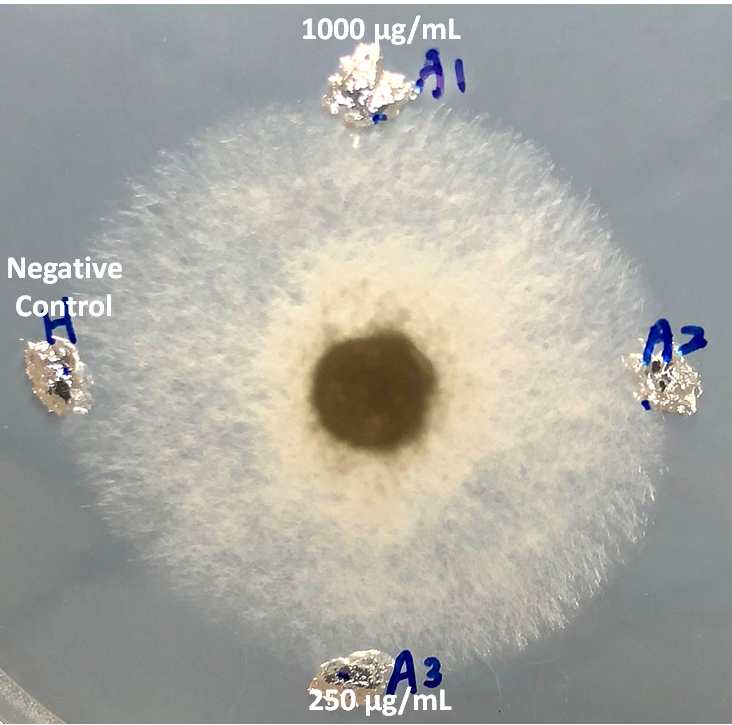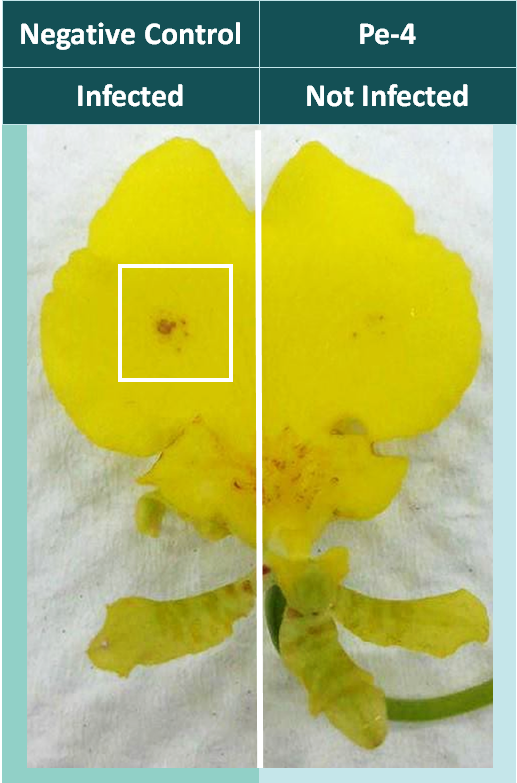Difference between revisions of "Part:BBa K2262013"
| Line 2: | Line 2: | ||
__NOTOC__ | __NOTOC__ | ||
<partinfo>BBa_K2262013 short</partinfo> | <partinfo>BBa_K2262013 short</partinfo> | ||
| + | <br> | ||
| + | <br> | ||
| + | <br> | ||
[[File:Composite part Pe-4.png|800px|thumb|center|'''Figure 1.''' P<sub>T7</sub>+RBS+Pe-4+terminator ]] | [[File:Composite part Pe-4.png|800px|thumb|center|'''Figure 1.''' P<sub>T7</sub>+RBS+Pe-4+terminator ]] | ||
| + | |||
| + | <br> | ||
| + | <br> | ||
<h1>'''Introduction'''</h1> | <h1>'''Introduction'''</h1> | ||
| + | |||
| + | <br> | ||
| | ||
| Line 26: | Line 34: | ||
<h1>'''Experiment'''</h1> | <h1>'''Experiment'''</h1> | ||
| + | |||
| + | <br> | ||
<p style="padding:1px;font-size:16px"><b>1. Fungal Test </b></p> | <p style="padding:1px;font-size:16px"><b>1. Fungal Test </b></p> | ||
Revision as of 23:04, 30 October 2017
T7 Promoter+RBS+Pe-4
Introduction
It has been known as an antimicrobial peptide. Its grade given by scoring card, which was created by NCTU_Formosa, shows it may also have an anti-fungal function.
Scoring Card Predict
Pe-4 got 408.83 points from the Anti-fungal Scoring Card of Parabase System, which was created by NCTU_Formosa. The grade is over 353, the threshold to divide whether a peptide has an anti-fungal function probability, that means Pe-4 has a high probability to have an anti-fungal function.
Experiment
1. Fungal Test
(1) Inhibition Zone
We put some mycelium on a Potato dextrose agar plate, PDA plate, and cultivated it at the point of 20℃ for culturing Botrytis cinerea, the fungi we used, for 2 days. Ensuring the mycelial colony has developed, we dug holes and the different concentrations of Pe-4 and HEPES, as a negative control, were added respectively. The place where peptide been but will appear a hole after 12 ~ 18 hours if the peptide will affect the growth of mycelium. The result shows that the place we put Pe-4 does have obviously different with negative control. It means the peptide has no obvious function on affecting the growth of mycelium.
(2) Spore Germination
To know whether the anti-fungal peptides can inhibit the germination of spores, we conducted the spore germination experiment.
(3) Botany Experiment
In order to test our anti-fungal peptides, we put Pe-4 and negative control, Double-distilled water, on the flower. The negative control on the left hand and BPe-4 on the right hand. Both sides are infected with Botrytis cinerea. We will check the flower 3 days later whether the flower was affected or not. The result shows that the right side, which was spread on Pe-4, is not infected. It means Pe-4 has an anti-fungal function.
2. Cloning
We put T7 promoter, RBS, and Pe-4 together with pSB1C3 as a backbone. Then we conducted Taq PCR to check the size of the DNA sequence was right. The length of T7 promoter+RBS+Sa-AFP2 is around 100 ~ 200 b.p.. Its PCR product is around 250 ~ 500 b.p..
Sequence and Features
- 10COMPATIBLE WITH RFC[10]
- 12COMPATIBLE WITH RFC[12]
- 21COMPATIBLE WITH RFC[21]
- 23COMPATIBLE WITH RFC[23]
- 25COMPATIBLE WITH RFC[25]
- 1000COMPATIBLE WITH RFC[1000]





